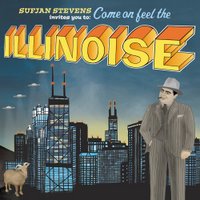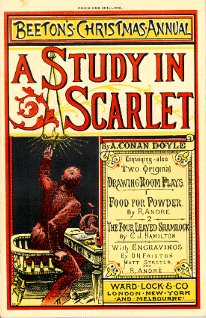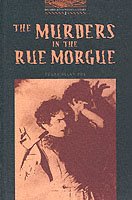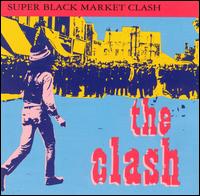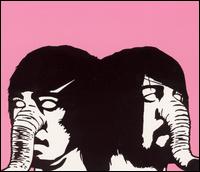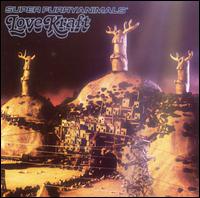As a child of the nineties I am indebted to the Seattle sound. If it wasn’t for the alternative explosion lead by Nirvana and Soundgarden then who knows what I would be listening to these days? These days I find myself hanging out with people who are mostly into independent music (indie hip-hop, punk, rock, or whatever), and it comes as
I secretly fear that without the Seattle sound I too would be listening to Shakira and Christina Aguilera. I shudder to think of myself in a parallel universe with the Pussycat Dolls on my i-pod. I would be forced to hang myself from my feet and then ritualistically eviscerate myself. However, in this universe I’ve been saved from bland music thanks to the nineties alternative boom. While pretty much all of the bands I listened to during the early nineties were on major labels, without them I would never have been drawn to independent music. The Seattle sound was my gateway drug.
Because I hold much of grunge music with esteem (specifically the big four: Nirvana,
In order to stymie the rumors that grunge has become a bunch of sappy marble mouth retreads I have created a list of bands who I believe are carrying the grunge legacy forward. Some are bands who have consciously borrowed from grunge and others merely take a parallel approach. I have even included some highlights of grunge bands still making great music. The following is the true grunge legacy:
Queens of the Stone Age
While I’m tempted to say that Sleater-Kinney represented the more punk side of grunge, that’s just not true anymore. Their newest album, The Woods, takes its cue from Jimi Hendrix and Led Zeppelin, which in turn takes punk to a whole new level. Also, like Soundgarden and The Melvins, Sleater-Kinney constantly get better on repeat listens.
Comets on Fire
Comets on Fire sound like Jimmy Page met Johnny Rotten in a back alley and only one was going to survive. Comets combine classic rock sounds with the proto-punk production and attitude of bands like The Stooges and MC5.
Isis
Isis is a sludge metal band that ends up being far more accessible than something like Earth, but still manage to push metal to its far reaches. In many ways grunge was merely taking punk and metal into places they’ve never been before.
Fantomas
Mike Patton is a consistent collaborator with the Godfathers of Grunge: The Melvins. I believe that Fantomas is Mike Patton’s most successful band (how many bands does he have, sixty-five?). Fantomas music can run the gamut from seventy-eight minute tracks of horror movie ambience to short bursts of punk energy. Named after a villain from a series of French novels, Fantomas do not fear evil – they incite it.
Pelican
While they could have picked a more imposing bird (was albatross taken, because that would have been a great allusion), Pelican are a formidable sludge metal band. They’re often referred to as Isis without vocals, but listening to their music you can tell they have their own brand of noise to kick out.
Modest Mouse
Okay, maybe Modest Mouse doesn’t sound like grunge, but like grunge you can hear the rainy Northwest weather in their music – especially in their early albums. I find it interesting when you can hear a region in a bands sound. I can never separate the Meat Puppets from the Southwest, for example.
Foo Fighters
Dave Grohl’s Wings project. Actually, Foo Fighters aren’t as bad as their detractors claim. Sure, they can get sappy at times, but check out The Colour and the Shape. That’s a great pop-rock album.
Local H
Local H make straight ahead blue collar rock and roll. Of all the non-Seattle bands that sprung up in the grunge aftermath Local H are easily the best. They may have had only one major hit, but unlike Stone Temple Pilots, Candlebox, and Collective Soul they didn’t feel like watered down grunge. Instead, Local H always sounded as if they just happened to have similar influences as the original grunge bands. They’re also the best live show I’ve ever seen.
Mark Lanegan
Mark Lanegan of the Screaming Trees has released several of his own solo albums. He has also collaborated with Queens of the Stone Age on many occasions. This proves that grunge wasn’t a flash in the pan, but a movement with dedicated and talented musicians.
The Melvins
Wait, you say, grunge is still around? The Melvins have been kicking it for years, and still sound better than any indie/pop rock band NME is pushing these days.
Mudhoney
They’re like The Ramones of grunge, but their music has evolved ever so slightly. Don’t hold that against them, Mudhoney still goes off.
Earth
Looking back on this list it is amazing how influential Earth has become. Sludge-metal and all of his relatives have gained a little foothold on independent music. This would not have been possible without bands like Earth. They are without a doubt the most bizarre grunge band. Their more resent releases still sound decades ahead of other experimental metal bands. That’s not to disparage those bands, but merely to show that Earth is still ahead of its time.
